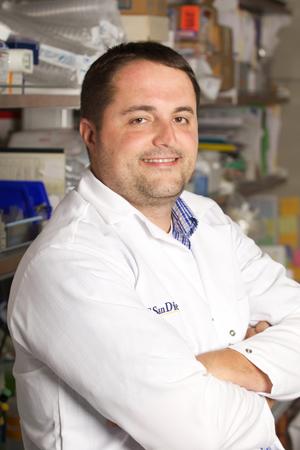David Weitz
Mallinckrodt Professor of Physics and of Applied Physics
Harvard University
Seminar Information

The stiffness of cells is commonly assumed to depend on the stiffness of their surrounding: bone cells are much stiffer than neurons, and each exists in surrounding tissue that matches the cell stiffness. In this talk, I will discuss new measurements of cell stiffness, and show that that cell stiffness is strongly correlated to cell volume. This affects both the mechanics and the gene expression in the cell, and even impacts the differentiation of stem cells. To probe the effects of gene expression, I will discuss lab-on-a-chip developments that provide a full gene expression analysis at the level of individual cells. Finally, I will also discuss new measurement techniques that probe the consequences of the cell stiffness on internal cell dynamics.
David A. Weitz and his group study the physics of soft condensed matter, materials easily deformed by external stresses, electric, magnetic or gravitational fields, and even thermal fluctuations. The goal of their research is to probe and understand the relationship between mesoscopic structure and bulk properties. Techniques used by the group include video-image analysis, light scattering, optical microscopy, rheology, and laser tweezing. New experimental techniques are developed, such as the use of multiply scattered waves to study the dynamics and mechanical properties of materials. Professor Weitz received his B.Sc. in Physics from the University of Waterloo, and his A.M. and Ph.D. in Physics from Harvard University. In addition to serving as the Mallinckrodt Professor of Physics and Applied Physics at Harvard University, he is also the Director of the Harvard Materials Research Science and Engineering Center, and the Co-director of BASF Advanced Research Initiative at Harvard.
